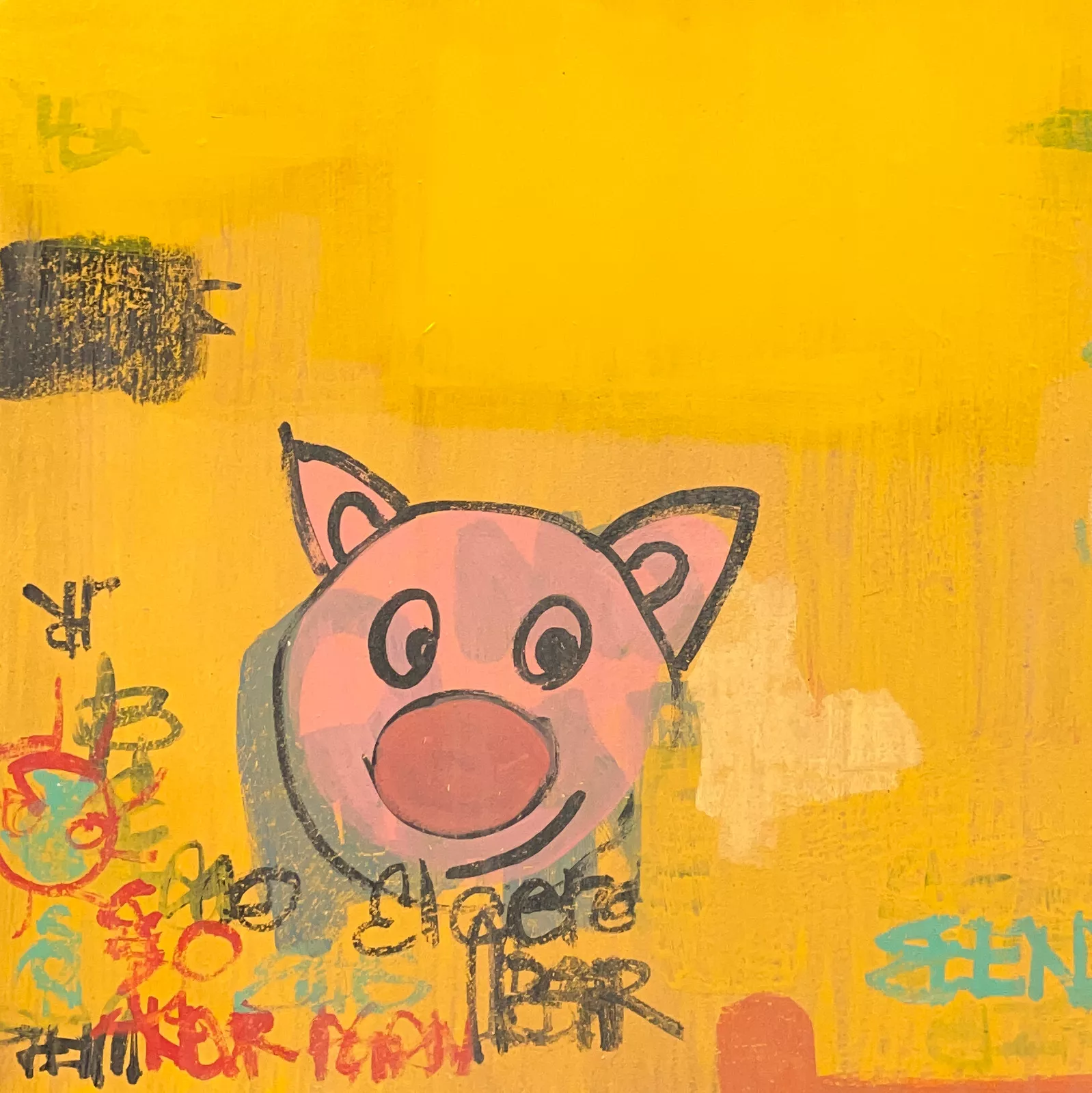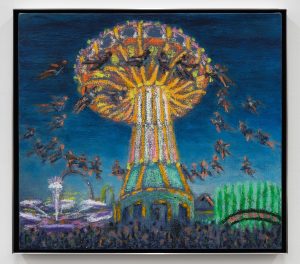A Season Suspended in Color
Vietnamese artist Xuan Khanh Nguyen is best known for capturing moments of quiet transcendence. His acrylic-on-canvas piece “Autumn Sunshine” is no exception—a painting that situates viewers not merely within a season, but within the fleeting emotion of autumn itself. Here, light becomes narrative, color becomes memory, and the ordinary edges of a day become drenched in meditative pause.
To label Autumn Sunshine as just a seasonal landscape would be reductive. Yes, it depicts trees, light, and earth—but it does so with an emotional resonance that transcends visual accuracy. What Nguyen offers is not a place, but a moodscape: a sensory intersection between memory and nature, time and presence.
In a rapidly urbanizing Vietnam where concrete and noise increasingly dominate the visual landscape, Autumn Sunshine feels like a sigh—a slow, golden exhale of reflection. This is a painting that doesn’t scream. It doesn’t provoke. It listens.
Artist Context: A Voice in Vietnamese Contemporary Art
Nguyen is part of a generation of Vietnamese painters deeply influenced by both traditional aesthetics and contemporary concerns. Born into a country with a rich history of lacquerware, silk painting, and folk woodcuts, his work maintains a reverence for craft and atmosphere while embracing modern techniques and abstract expressionism.
His signature medium, acrylic on canvas, allows for flexibility, layering, and immediacy—ideal for capturing light, texture, and emotive nuance. Unlike oil, acrylic dries fast, encouraging decisive brushwork. Nguyen uses this to his advantage, allowing strokes to retain their energy and intentionality without overworking them into polish.
Throughout his career, Nguyen has shown an unwavering commitment to evoking place through feeling, not documentation. His canvases often suggest rather than describe. He does not replicate scenes; he inhabits them—and invites us to do the same.
Visual Composition: A Study in Light
The Glow of Absence
In Autumn Sunshine, light is not merely a tool of visibility—it’s the protagonist. It filters through trees with theatrical softness, pooling across the ground like liquid gold. Yet, there’s no direct source. The sun is absent, out of frame. Its presence is inferred, suggested by the warmth it lends the palette. In this way, Nguyen turns absence into atmosphere.
The absence of literal sunshine compels viewers to rely on impression. And in that impression, we are gifted with a sense of the ephemeral: the kind of light that touches you only in passing, the kind you feel more than see.
Color and Emotion
The color palette leans heavily into burnt siennas, ochres, amber yellows, soft rusts, and pale moss greens—classic autumnal shades. But Nguyen’s handling of these tones isn’t decorative. His yellows don’t dazzle; they hum. His oranges aren’t loud; they warm. This restraint renders the canvas not a riot of color, but a quiet lyric.
There’s no jarring contrast here—just harmonies. The background layers are intentionally blurred, as if seen through memory. Foreground details—perhaps leaves, perhaps branches—are loosely articulated, keeping the viewer hovering between realism and reverie. The result? A landscape that doesn’t anchor you to geography but floats you in sensation.
Technique: Between Brush and Breath
Acrylic as a Timekeeper
Nguyen’s use of acrylic is particularly masterful in Autumn Sunshine. The fast-drying medium forces spontaneity while enabling layering. There are visible areas of wet-on-wet blending, where warm hues melt into one another like fog into soil. Elsewhere, dry brushwork creates texture—leaves rustling in midair or bark textured with memory.
The artist allows paint to settle naturally, letting its grain and rhythm suggest form. He is unafraid of transparency. In several parts of the canvas, underpainting shows through—a visual echo, suggesting past seasons or underlying structure. This layering is not just aesthetic; it’s metaphysical. Nguyen paints time itself.
The Role of Negative Space
Perhaps one of the most telling aspects of the composition is Nguyen’s use of negative space. Between tree trunks, behind patches of grass, and in the atmospheric mid-ground, there are moments where the canvas seems to breathe. These voids are not emptiness—they are invitation. They allow the viewer to participate, to fill the space with their own recollections of autumn.
This interplay between form and emptiness mirrors Buddhist notions of impermanence, common in Southeast Asian art. By leaving space unpainted, Nguyen doesn’t leave it unfinished. He leaves it alive.
Thematic Layer: Nostalgia Without Sentiment
Autumn, as a theme, often carries with it the weight of nostalgia, the ache of decline. Yet Autumn Sunshine sidesteps sentimentality. There is no pathos here—just acceptance. The painting doesn’t mourn the falling leaf; it witnesses it.
This quiet embrace of transience aligns Nguyen’s work with philosophies found in both Eastern aesthetic traditions and Western Impressionism. Like Monet, Nguyen is less concerned with defining object boundaries and more interested in capturing the mood of a moment—the interplay of light, memory, and motion.
But where Impressionists often leaned into urban or social life, Nguyen chooses solitude. His landscapes are largely unpeopled. In Autumn Sunshine, the absence of human figures shifts focus to the viewer’s interior life. You’re not looking at a scene; you’re stepping into it.
Cultural Resonance: Vietnam and the Poetics of Season
In Vietnamese culture, autumn (mùa thu) is often associated with romance, poetry, and longing. It’s a season celebrated in folk songs and literature—a moment of melancholic beauty, where nature’s soft decay mirrors the introspective turn of the human spirit.
Nguyen’s painting taps into this cultural vocabulary but updates it. There is no temple or traditional motif. Instead, the painting speaks in a universal vernacular of season and sensation, allowing it to resonate across contexts. That said, the specific texture of the trees, the patterning of the soil, and the quality of light unmistakably root the piece in the Vietnamese landscape—perhaps a rural edge of Hanoi, or a garden in Da Lat.
By keeping the iconography open-ended, Nguyen invites both local and global interpretations. The painting becomes a bridge—connecting village and gallery, memory and future.
Critical Reception: Quiet Excellence
While Nguyen remains somewhat under the radar in global art circles, he commands quiet respect within the Vietnamese art community. Critics note his ability to balance abstraction and figuration, craft and emotion. Autumn Sunshine is frequently cited as a mature work that encapsulates his strengths—an exemplar of modern Vietnamese painting that remains emotionally accessible without sacrificing depth.
In exhibitions across Hanoi and Ho Chi Minh City, viewers linger before the piece. Some describe a sense of peace. Others call it a portal. Many return to it, not for new discoveries, but to re-immerse themselves in its gentleness.
In a time when much of the contemporary art world is driven by provocation or spectacle, Nguyen’s work is radical in its restraint.
Legacy: A New Kind of Timelessness
Autumn Sunshine is not a painting that shouts for attention, but it stays with you. Like sunlight caught on the edge of a leaf, or the fading scent of smoke on a cooling street, it lingers.
For collectors, curators, and enthusiasts alike, the piece represents a shift: away from noise and toward nuance, from consumption to contemplation. It belongs not just in white-walled galleries, but in quiet rooms, reading corners, morning rituals.
Nguyen reminds us that in the rush to document everything—every face, every city, every season—we often overlook the soft impressions that make life feel whole. Autumn Sunshine gives us that softness back.
Impression
In the end, Autumn Sunshine is less about autumn itself and more about what autumn awakens. It’s about letting go and leaning into the changing light. About recognizing beauty in decline, grace in stillness, and presence in the most passing of moments.
Xuan Khanh Nguyen has gifted us not just a painting, but a space for reflection. In a world increasingly mediated by screens, speed, and spectacle, Autumn Sunshine offers something slower, richer, and enduring.
So take a moment. Step in. Let the light touch your thoughts. And then carry that warmth with you—wherever your own season might lead.
No comments yet.








